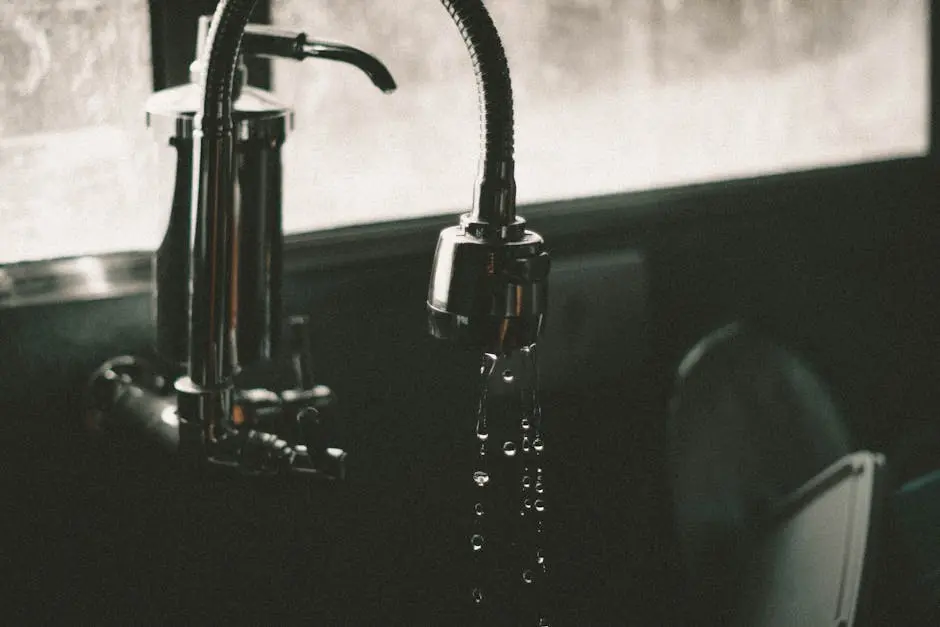Your kitchen is the heart of your home, and when your plumbing is acting up, it can throw off your entire day. Catching plumbing issues early can save you from expensive repairs and lengthy downtime. In this blog, we’ll explore some telltale signs that your kitchen plumbing needs your attention right away.
1. Unusual Sounds from Your Pipes
Banging, clanking, or any strange noises coming from your kitchen plumbing are often an indicator of air in the pipes or a potential blockage. These sounds shouldn’t be ignored, as they may lead to bigger issues down the line. Often, the root cause may be due to water pressure fluctuations or pipe diameters that don’t quite match up, causing vibrations.
Rattling sounds are typically a sign of loose pipes, which might need securing. Ignoring these noisy signals can result in the pipes fully dislodging, leading to chaotic leaks or bursts. Regular plumbing inspections can help detect any loose fittings and ensure everything stays securely in place, providing peace of mind and operational efficiency.
2. Slow Draining Kitchen Sink
A sink that is slow to drain is a classic sign of a clog. Left untreated, it can escalate into a complete blockage. This often happens due to food particles, grease, or other debris accumulating in the pipes. Regular cleaning and maintenance can help prevent these buildups, but once a clog forms, it may require professional attention to fully clear it out.
Home remedies, like baking soda and vinegar, can sometimes dislodge smaller clogs; however, persistent slow drainage is usually a sign that professional cleaning is needed. A drain cleaning service can ensure that your pipes are clear of any stubborn blockages and future clogs are minimized.
3. Persistent Dripping Faucet
A faucet that continues to drip despite being turned off may seem like a minor irritation, but it can lead to significant water waste and increased water bills. It’s a signal that the washer or valve seat might need replacement. According to estimations, a dripping faucet can waste several gallons of water per week, which can add up quickly on your monthly utility bill.
Replacing a washer is relatively straightforward, but constant dripping could signify deeper issues, such as valve corrosion or cracked pipes. Engaging in regular faucet maintenance ensures these problems are caught early, preventing more serious plumbing issues down the line.
4. Unexplained Water Pooling
Finding water around your kitchen sink or anywhere else in the kitchen is a clear indication of a leak. This needs immediate attention, as undetected leaks can lead to water damage or mold growth if not addressed quickly. Pooling water can cause damage to cabinetry and flooring and create an environment conducive to mold and mildew, which can impact indoor air quality.
Sometimes, leaks may originate from hidden sources, which can be hard to detect without proper equipment. Utilizing state-of-the-art leak detection technology can help pinpoint the exact source of a leak, allowing for efficient and targeted repairs, saving time and preventing further damage.
5. Foul Odors from the Drain
If unpleasant smells are emanating from your kitchen sink, it might mean that food residues are trapped in the pipes. This may not only be an inconvenience but could also attract pests, leading to further hygiene concerns. These odors often indicate bacterial growth, which can be harmful if left unaddressed.
Regular cleaning, along with the occasional use of baking soda and hot water, can mitigate minor odors. However, persistent foul smells suggest a deeper problem, potentially pointing to sewer gas leaks. Enlisting professional drain cleaning services can ensure a thorough clean and help maintain a fresh kitchen environment.
6. Water Stains Under Sink
Checking under your sink regularly can help catch potential leaks before they escalate. Any sign of water stains or dampness in this area should be promptly investigated for leaks or drips. These stains can be indicative of a slow leak from the pipes or even from connecting faucets.
Ignoring these signs can lead to the gradual degradation of the cabinetry or flooring beneath the sink, which can be a costly repair. Regular under-sink inspections ensure any moisture problems are detected early, preserving the integrity of your kitchen’s structural components.
7. Increased Water Bill
If you’ve noticed an unexplained hike in your water bill, it could be due to a hidden leak. Small drips can add up over time, leading to increased water usage. Such leaks sometimes aren’t immediately visible, especially if they occur in concealed areas or underground.
To rule out potential plumbing issues as a cause for increased water bills, conduct regular water usage audits. This proactive approach can identify unusual patterns and help you take corrective action before the problem becomes bigger.
8. Discoloration of Water
Discolored water flowing from your kitchen tap is a signal to investigate further. Rusty or brown water can point to pipe corrosion, which may require immediate replacement. The presence of discoloration indicates mineral build-up or rust, which can be detrimental if consumed or used in daily kitchen activities.
Pipe corrosion often occurs in older plumbing systems and can lead to more serious problems if not addressed. Scheduling regular pipe maintenance can help extend the lifespan of your plumbing and ensure the water quality in your home remains high.



